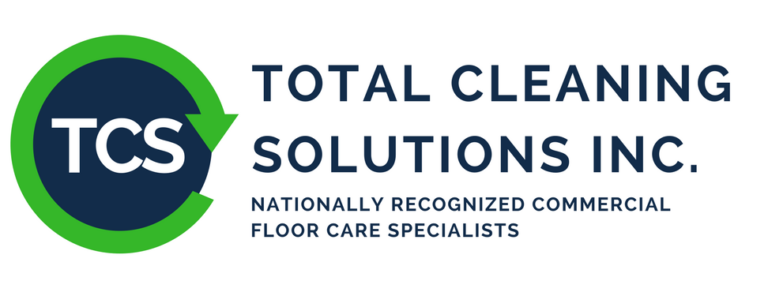What happens when you combine polyvinyl chloride (PVC), a bit of limestone, and some heat and pressure? You get a finished flooring material that can endure high foot traffic for decades.
For a long time now, commercial facilities have tried and tested countless flooring options, but none of them seem to check all the boxes like Vinyl Composition Tile (VCT) does.
Why is that? Simply put, VCT is a much cheaper material than the alternatives. However, just because it’s more affordable, that doesn’t undermine its quality. In fact, VCT can really take a beating, so to speak.
With proper maintenance and care, this flooring material can endure almost everything you can throw at it, literally and figuratively speaking.
Not only that, but VCT can be customized into any design that you prefer, making it very aesthetically pleasing. With that in mind, here’s everything you need to know about VCT and how to properly maintain it.
What Exactly is VCT and Why is it Popular?
As mentioned before, VCT is a finished flooring material made by heating up and compressing PVC and limestone to produce segments of different dimensions. In a sense, VCTs primary purpose was to replace linoleum.
As it turned out, both flooring materials remain to this day, and both have unique advantages and disadvantages. Up until the 1980s, VCT also contained asbestos lining due to its insulating and fire-resistant properties, but don’t worry; modern floor tiles are asbestos-free.
Technically, the asbestos lining in the old VCT floorings was safe, as long as it was properly sealed, and it didn’t take any serious physical damage. Nevertheless, old tiles are removed from commercial buildings by professionals these days and replaced with newer, safer models.
Speaking of which, this is one of the reasons why VCT has significantly grown in popularity over the years. Even though the materials were refined over time, the main characteristics remain the same. That said, VCT is quite cheap to make and easy to install, it’s very durable and resistant to damage, and if it gets worn out somehow, it can easily be replaced.
Although that won’t happen for at least 20 years or more, depending on how frequently and properly you maintain it. If you don’t know how or you lack the necessary means to maintain VCT flooring on your own, you can always opt for vinyl VCT floor waxing services and let professionals do the work for you.
Moreover, VCT is ideal for commercial spaces, such as:
- Office buildings
- Retail stores
- Warehouses
- Medical facilities
- Educational institutions like high schools and universities
- Churches
However, due to its durability and economic design, VCT has also made its way into residential properties. Although it’s unwise to install it in your bedroom, other areas like kitchens, basements, garages, and so on, can stand to benefit from such flooring material.
One of the main reasons is that VCT comes in all shapes and sizes. Not only that, but you can choose a specific pattern or color that suits you most. That said, if you want VCT installed in your commercial space, the general rule of thumb is to make a special order instead of settling for ready-made on the shelf products.
This way, you can opt for tiles with specific measurements, which means it will be easier to install, and you get to choose the design. For example, you can even choose a pattern that looks exactly like a hardwood floor.
How to Clean and Maintain VCT Flooring?
VCT offers numerous benefits, but it’s not without some flaws. As a matter of fact, VCT isn’t 100% waterproof on its own. This is why it has to be properly installed and sealed. To enhance water resistance, VCT floors are coated with at least two layers of industrial-grade wax.
Once that’s done, it’s just a matter of regular cleaning and maintenance so that your floor can last for decades. Here are some of the maintenance tips to help you preserve your VCT flooring:
1. Use Mats
Regardless of the type of commercial space, you should always place doormats at every entrance so that customers or employees can wipe their feet. This minimizes dirt exposure to the flooring, making it easier to clean and maintain.
2. Clean Regularly
VCT floors should be properly cleaned at least once per day. You can do this by sweeping the floor with a broom to remove any dirt or dust.
After that, you can use a damp mop and non-aggressive cleaning solutions, alongside clean water. Mopping the entire floor every day ensures that dirt and grime don’t stack up and further damage the wax coating.
3. Use Auto Scrubber
An auto scrubber cleans the floor in more detail than using just a mop. It actually scrubs a thin layer of coat alongside any dirt and residues. After a thorough clean with a scrubber, you can apply a fresh coat of floor finish to ensure that the VCT remains intact.
4. Stripping and Resealing
Every now and then, the entire VCT floor should be scrubbed. How often you should do this entirely depends on foot traffic and the amount of damage the floor is taking each day.
That damage may include chemical spills, dirt, physical damage, such as dropping something heavy on the floor, and so on. That said, scrubbing the floor means removing the wax completely so that tiles can be properly resealed.
After that is completed, a new coat of wax is added to the floor to replace the old one. Keep in mind that this is part of the commercial VCT cleaning, and it should be done by professionals, which means that vinyl floor stripping and waxing services can really come in handy for that process.
VCT as a Lasting Investment
Like any other improvement to your residential or commercial space, installing a VCT floor is considered an investment. As such, you want your investment to last, so that it ends up as cost-effective as possible.
Although VCT has enormous potential, it can only endure if you maintain it regularly. Therefore, the best option is to create a regular VCT floor maintenance schedule to ensure the flooring is in tip-top shape at all times. Such a maintenance schedule should include:
- Segment maintenance tasks based on necessity, such as daily, weekly, and monthly activities.
- Hire skilled cleaning staff who know how to maintain VCT floors properly.
- Schedule professional services in advance for scrubbing, waxing, and detailed cleaning using appropriate tools.
- If unforeseen circumstances happen, such as substantial damage to the floor, major spills, excess dirt, and so on, act immediately and don’t wait for the next cleaning routine.
Maintain Your VCT Flooring Properly with TSC Floors

Alt Text: An image of the TSC Floors company logo.
With 31 years of experience, our devoted team of experts at TSC Floors is dedicated to providing the absolute best commercial floor cleaning services. We take pride in our work and are completely result-driven. Because of this, we cater to the needs of different commercial spaces, such as:
- Retail
- Office buildings
- Schools
- Hospitals
- Industrial complexes
- Churches
- Storage facilities
- City and State buildings.
If you’re interested in our results, feel free to check out the work we do, and if you’re interested in costs, you should know that we have a custom pricing program. In other words, give us a call today and we’ll see what needs to be done. After that, we’ll get you an affordable quote that will fit into your budget.
Conclusion: Taking Proper Care of Your Vinyl Composition Tile Floor
VCT, also known as Vinyl Composition Tile, is one of the most sought-after flooring materials today. After all, it’s cheap, durable, and it can even look amazing with the right design.
However, everything requires proper care if you want it to last, and VCT is no exception. With proper maintenance and regular cleaning, this amazing flooring solution can keep going strong for decades to come.
FAQs
What is the composition of vinyl tile?
Vinyl tile is technically a combination of different materials that work together to create a durable, attractive, and functional flooring surface. Some of the core components of vinyl tile often include PVC (Polyvinyl Chloride), additives, such as stabilizers to prevent degradation over time, plasticizers to make the vinyl flexible, and fillers, like limestone, to improve stability.
What is the meaning of vinyl composition tile?
The term “composition” refers to the specific mixture of materials mentioned above designed to produce a VCT flooring solution.
That said, VCT typically features a homogeneous composition, meaning the entire tile is made from the same mixture, which allows for easy replacement of individual tiles if one gets particularly damaged.
What material is vinyl tile?
As mentioned before, a vinyl tile is primarily made from polyvinyl chloride, also known as PVC, which is a type of plastic polymer.
Aside from the core materials, some vinyl tiles may include fiberglass reinforcement or backing layers to improve stability and dimensional integrity.
What is the difference between vinyl composition tile and luxury vinyl tile?
Both VCT and LVT are types of vinyl flooring. However, they differ significantly in composition, manufacturing, appearance, and installation.
For example, the composition of VCT is consistent throughout the tile, and it’s made primarily from vinyl resins. On the other hand, LVT is composed of multiple layers, such as a high-quality design layer, a core, and a protective wear layer, alongside an attached backing layer for stability.


